GOARDIC GAIDEN
( The Guardian Legend )
|
|
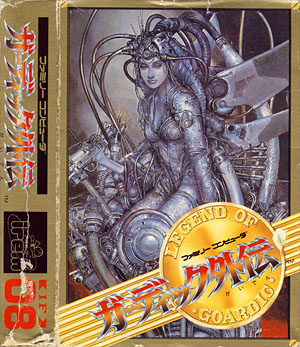
|

|
|
ガーディック外伝
©1988 Irem Corp.
Licensed from Compile
Release: 1988-02-06 (¥5500)
Cartdridge IF-08
Shooter/Adventure
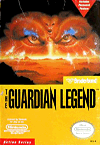

|
Released in America as
THE GUARDIAN LEGEND
( NES-GD-USA )
|
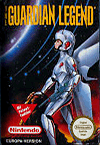

|
Released in Europe as
THE GUARDIAN LEGEND
( NES-GD-XXX )
|
|
Guardic Gaiden (aka The Guardian Legend in the west) is a
shooter/action/adventure game by Compile. A large artificial planet called Naju
is hurtling towards Earth and humanity is inclined to stop the upcoming destruction of their
home world. Their only hope lies in a highly sophisticated aerobot guardian called
Miria (codenamed System D.P), a female humanoid robot who can transform into
a powerful spaceship. Her mission is to infiltrate Naju and to activate the large
planet's self-destruct mechanism before it reaches the Earth. Guardic Gaiden begins
as a traditional shooter where Miria, in her space-fighter mode, flies through
narrow corridors, defeats waves of enemy ships and confront vile end-level bosses. Once
the corridor's boss is vanquished, Miria transforms into her humanoid mode and the
game switches to a traditional action/adventure overhead view. There, she must explore
the surface of Naju, find twenty locked corridors, collect power-ups and gather
important clues to move forward in the game. Most of the corridors are sealed at first
and she must retrieve ten sign-coded keys (obtained by defeating bosses) to gain access
to the different sections the game has on offer. Naju is incredibly vast and a
map is available at anytime during the game to guide our heroine in her dangerous mission.
Miria comes equipped with two weapons - a standard upgradeable laser-blaster and
a wide array of secondary weapons (missiles, grenades, light saber,
rotating fireballs, blue plasma and so forth). The latter are upgradeable
(up to 3 times) and are limited by the amount of power chips Miria carries
around. Power chips are at the core of the gameplay and symbolized by colored orbs
(blue and red) scattered around the game. The are usually hidden inside small
destructible pyramids along with other special items such as energy tanks,
gun power cells, shields, gun power-ups and the almighty
enemy erasers which annihilate every lifeforms on screen. Shops scattered
throughout Naju are also convenient places to purchase upgrades in exchange
of power ships. Guardic Gaiden features a password system to save the player's
progress - however, collecting passwords is rather unusual here and players have to
meet Randā (blue and round creatures often seen in early Compile games and also
known as Landers) to retrieve them.
|
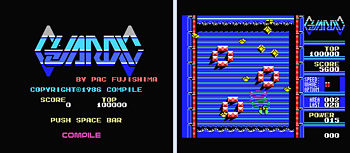 Guardic Gaiden is the sequel of Guardic, a vertical shooter
designed by Pac Fujishima and released by Compile for the MSX
in 1986 (pictures on the right). The game is built around single-screen shooting phases where the player
destroys waves of oncoming enemies in order to proceed to the next screen.
Interestingly, the end of the game reveals that the mother ship the player just
destroyed wasn't in reality the real fortress and that a new guardic needs
to be developped to destroy it - an interesting premise to the Guardic Gaiden
sequel it seems, essentially confirmed by the simple "to be continued" catch
phrase accompanying the end credits.
Guardic Gaiden is the sequel of Guardic, a vertical shooter
designed by Pac Fujishima and released by Compile for the MSX
in 1986 (pictures on the right). The game is built around single-screen shooting phases where the player
destroys waves of oncoming enemies in order to proceed to the next screen.
Interestingly, the end of the game reveals that the mother ship the player just
destroyed wasn't in reality the real fortress and that a new guardic needs
to be developped to destroy it - an interesting premise to the Guardic Gaiden
sequel it seems, essentially confirmed by the simple "to be continued" catch
phrase accompanying the end credits.
|
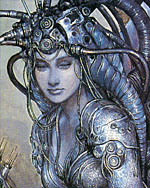 The excellent Japanese cover art was illustrated by Naoyuki Kato,
a popular Japanese illustrator who also worked (mechanical design) on
Ginga Eiyu Densetsu (aka Legend of the Galactic Heroes), a science
fiction anime first aired in 1988. He had previously drawn many science-fiction novel
covers and is a member of the Japanese design house Studio Nue (co-designers
of Chōjikū Yōsai Macross, Uchū Senkan Yamato and Tenkū no Escaflowne).
It is truly unfortunate that a different cover was chosen for the American release, it just doesn't
fit the theme of the game very well. The European cover art is somewhat better (it at least
features a girl in a sophisticated robot suit) but is admittedly of questionable quality.
The excellent Japanese cover art was illustrated by Naoyuki Kato,
a popular Japanese illustrator who also worked (mechanical design) on
Ginga Eiyu Densetsu (aka Legend of the Galactic Heroes), a science
fiction anime first aired in 1988. He had previously drawn many science-fiction novel
covers and is a member of the Japanese design house Studio Nue (co-designers
of Chōjikū Yōsai Macross, Uchū Senkan Yamato and Tenkū no Escaflowne).
It is truly unfortunate that a different cover was chosen for the American release, it just doesn't
fit the theme of the game very well. The European cover art is somewhat better (it at least
features a girl in a sophisticated robot suit) but is admittedly of questionable quality.
|
Teaser text from the American version:
Long ago, in a distant galaxy, an alien
race sent a huge world - called Naju -
hurtling towards Earth, loaded with a
cargo of mysterious lifeforms.
During the long journey, these creatures
have multiplied and become increasingly
evil - and now Naju teems with evil.
However, deep within this complex globe
are self-destruct mechanisms that can
be activated to destroy it before it
reaches the Earth.
Now, you must battle your way deep within
Naju's labyrinths to destroy it. You are
the guardian of Earth and your saga will
become The Guardian Legend.
|
Game Staff (Copied from the American version's end credits) :
|
Program and Effects
Jemini Hirono
Passwords
Wao Isee
Map Maker
Pochi Nakamori
|
|
Graphic
Janus Teramoto
Yoriki
Music
Miyamo
Shant
Effect Idea
Shi-Kun
|
|
Test Play
Midnight
Commander-Nui
janus Teramoto
Kunny
Tanida
Shant
Pal
...etc
|
|
Director
Moo Niitani
Created by Compile
Produced by
Irem Corporation
|
|
G
O
O
D
I
E
S
|
|
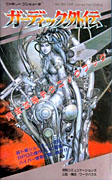
Japanese Guidebook
|
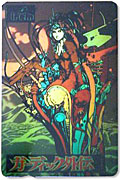
Japanese Phonecard
|
|
|
O
M
A
K
E
|
|
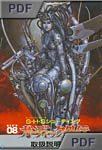

|
|
|
Click on picture to enlarge |
S
E
C
R
E
T
S
|
|
Play the game in shooting mode only:
Japanese version:
Enter えいえる じい as a password.
American version:
Enter TGL as a password.
|
|
|
|
|
|
LK

|
|
Add your Pov here !
|
P
O
V
s
|
|
Guardic Gaiden is a game that sadly slipped through the cracks
of popularity. The gameplay is what makes this game stand out from the
crowd - Compile cleverly weaved a game that mixed two genres together
and took the player on an epic journey inside a beautifully detailed and
interconnected alien world. Enemy wise, the game throws a myriad of unique and
curious creatures at you but there is a greater emphasis on larger foes and
the various bosses are magnificent. The Guardic Gaiden is also as
much of an aesthetic achievement as a technical one - the shooting phases
are fast and furious (this is a Compile game after all) and the game
is incredibly vast. Even after hours of play, do not be surprised if you feel
you have only barely scratched the surface of Naju and the weapon
system on offer. The soundtrack is equally great and wonderful. So, if a game
does everything so right, how come it is only rewarded four stars ? The
password system is a brave, yet flawed idea. Having to hunt
down a blue Randā, unequip your secondary weapon and copy the excruciating
long passwords is an unnecessary and useless waste of effort. The game also
tends to become a bit repetitive (bosses and enemies are heavily recycled
throughout the game), but the password system is definitively the only drawback
for me. All in all, Compile managed to brilliantly hybridize two genres
together in order to achieve a slick and inventive game - an underrated
and immersive classic.
|
|
|
|